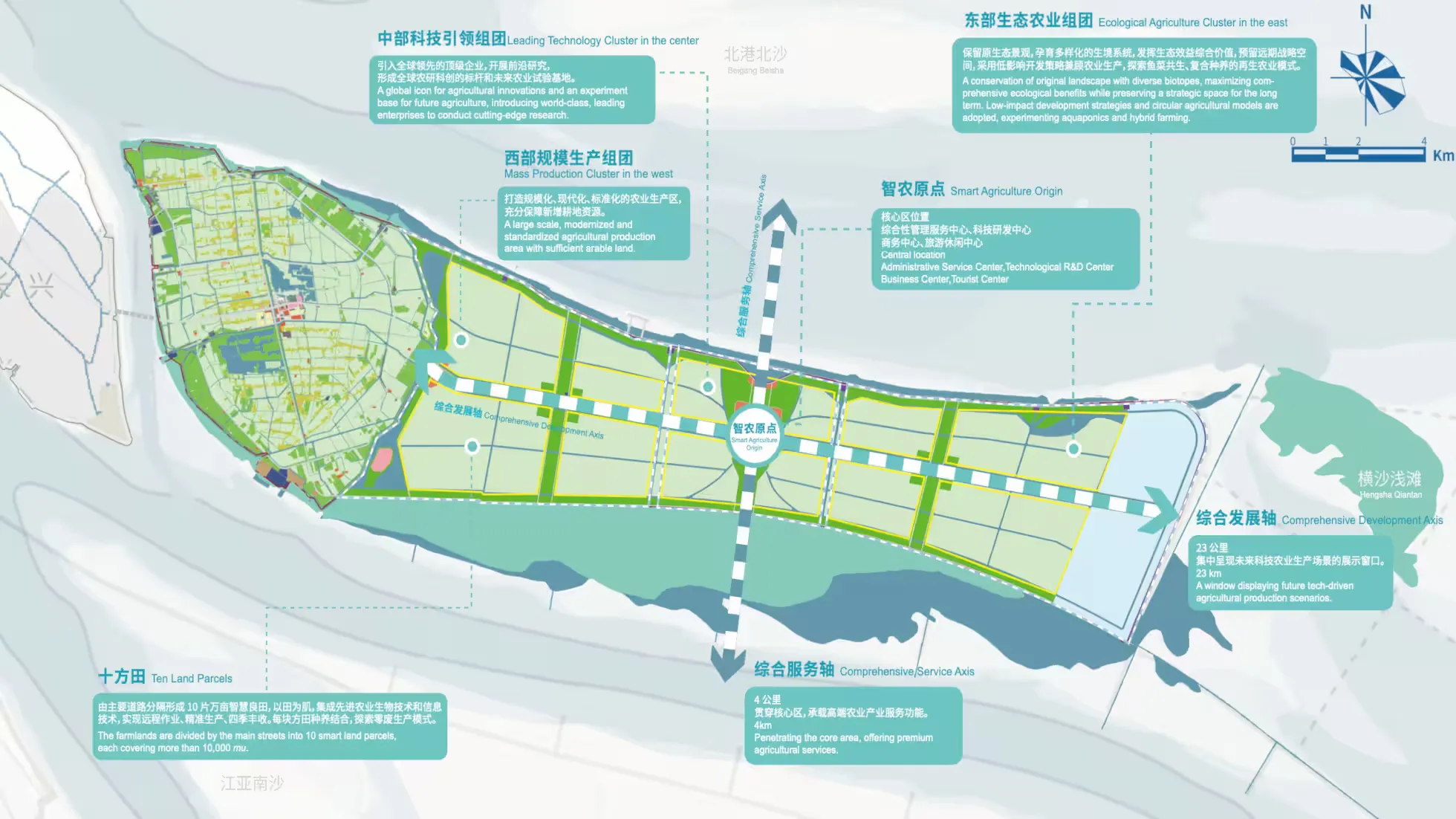Hengsha Xinzho Urban Agriculture Planning

Hengsha Island is located outside Changxing Island at the mouth of the Yangtze River, currently consisting mainly of large tidal flats and some farmland. Its future positioning is as an urban agricultural demonstration area in Shanghai, with the goal of meeting 30% of the demand for vegetables, meat, and dairy products for Shanghai’s 30 million residents. The Shanghai municipal government hopes to achieve this goal by improving agricultural standards.
Shanghai places great importance on the development of Hengsha Island due to the city’s enormous population. I asked ChatGPT to estimate the daily food demand of Shanghai, this megacity, and the specific calculation process can be found at the end of the article.
To meet such a massive food demand, we need many farms. While we can purchase and distribute meat, eggs, and dairy products from other regions, fresh vegetables need to be supplied locally to some extent. In extreme situations, agricultural products from other regions may not be able to meet demand in a timely manner. Therefore, Shanghai needs to grow a certain amount of vegetables locally to ensure a minimum supply.
In Shanghai, where land resources are extremely valuable, there is virtually no additional land available for agriculture, and the existing agricultural land is constantly being eroded. As a result, Shanghai has to look for external solutions, including mutual support with the northeastern provinces and northwest regions, ensuring supply through cultivation in other regions, and seeking land from offshore islands.
In Shanghai, where land resources are precious, valuable products can only be developed through the development of high-end agriculture and improved land utilization. As the most developed city in China, Shanghai also has the responsibility to lead the development of Chinese agriculture. The agriculture it develops must serve as a model and set an example.
The overall positioning of Hengsha Xinzho is high-end agriculture. Its future development path has been indicated in the recently released “National Modern Facility Agriculture Construction Plan,” which mainly includes: developing modern urban intelligent facility agriculture, building high-end production facilities such as year-round production, multi-layered planting, and smart-controlled greenhouses and plant factories; promoting three-dimensional planting and soilless cultivation; and implementing intelligent management.
Estimation Process
We will take Shanghai’s permanent population in 2022 as an example and estimate daily food consumption based on the recommendations of the “Chinese Dietary Guidelines.”
First, we learned that the permanent population of Shanghai in 2022 was approximately 24.75 million. Then, we referred to the “Chinese Dietary Guidelines,” published by the Chinese Nutrition Society, which provides recommendations on healthy eating for Chinese residents, including the daily intake of various foods and nutrients.
Based on the recommendations of the “Chinese Dietary Guidelines,” we organized the recommended daily intake for different types of food as follows:
- Grains: 250-400 grams per day
- Vegetables: 300-500 grams per day
- Fruits: 200-350 grams per day
- Dairy products: 300 grams per day
- Soy products: 25-35 grams per day
- Animal-based food: 120-200 grams per day
- Eggs: 40-50 grams per day
- Dark vegetables: 50-100 grams per day
Using these recommended values, we used simple multiplication to multiply the recommended daily intake for each food type by the population of Shanghai, resulting in the following daily food consumption for Shanghai:
- Grains: about 8,047 tons
- Vegetables: about 9,904 tons
- Fruits: about 6,809 tons
- Dairy products: about 7,428 tons
- Soy products: about 743 tons
- Animal-based food: about 3,961 tons
- Eggs: about 1,114 tons
- Dark vegetables: about 1,857 tons
These are the estimated daily food consumption values for Shanghai based on the “Chinese Dietary Guidelines.” Actual consumption may be influenced by many factors, including seasons, weather, holidays, food prices, and availability. However, this calculation method provides a useful tool for understanding and predicting urban food demand, which is of great importance for urban planning, food supply chain management, and food security policy formulation.
Published at: Oct 8, 2024 · Modified at: Aug 31, 2025


